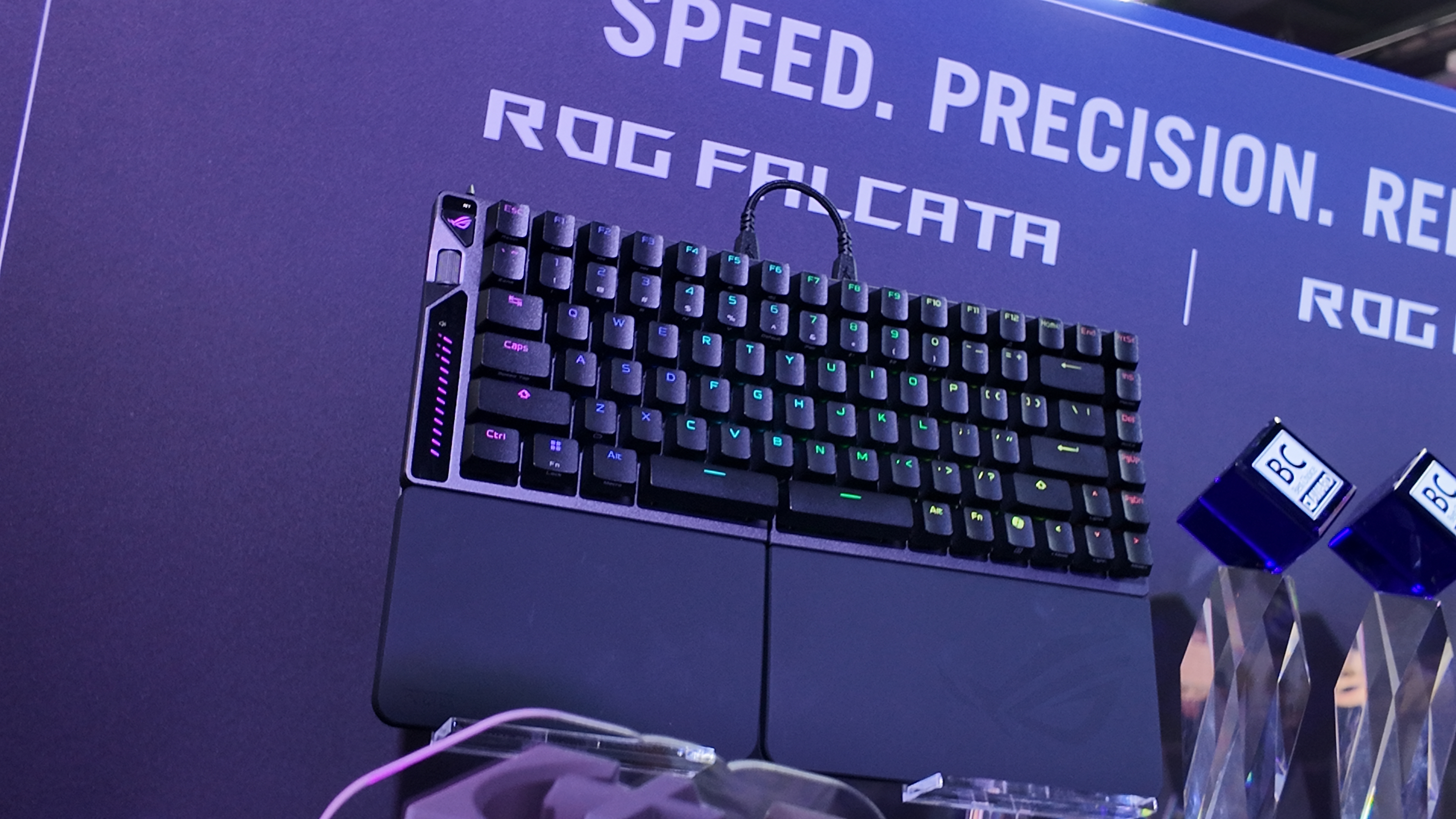Innovations in Gaming Technology: A New Era for Ergonomic Keyboards and OLED TVs
Author: Jacob Ridley

As the gaming industry evolves, so do the technologies that support it. With an increasing number of players seeking comfort and enhanced performance, innovations in hardware play a pivotal role. This article delves into two emerging trends in gaming technology: Asus's new ergonomic keyboards and Samsung's OLED TVs featuring NVIDIA G-Sync compatibility.
Firstly, Asus has unveiled its upcoming ROG Falcata keyboard, designed to cater to gamers who prioritize both comfort and performance. This keyboard introduces two significant features: Hall effect technology and wireless connectivity. Hall effect switches are known for their durability and a distinct tactile feel that can greatly enhance the gaming experience.
Hall effect sensors detect key presses using magnetic fields, allowing for quicker response times and longer-lasting performance compared to traditional mechanical switches. This technology not only improves the gaming experience by reducing the delay in key responses but also increases the overall lifespan of the keyboard, making it a wise investment for serious gamers.
The inclusion of wireless connectivity further elevates the ROG Falcata's appeal, offering gamers the freedom to play without the constraint of wires. Wireless gaming peripherals have gained popularity due to their convenience and reduced clutter. However, the challenge has always been to ensure stable connectivity and minimal latency — something Asus claims to have addressed with this model.
Beyond keyboards, Samsung is making waves in the TV market with its 2025 OLED lineup. The standout feature in this series is the integration of NVIDIA's G-Sync technology, aimed at providing a smoother gaming experience. The S95F model, which debuted at CES 2025, represents the forefront of this innovation.
G-Sync compatibility aligns the TV's refresh rate with that of the GPU's output frame rate, effectively eliminating screen tearing and ensuring fluid motion during gameplay. This upgrade is poised to benefit competitive gamers and casual players alike, as it delivers a seamless viewing experience, particularly with graphically demanding games.
Samsung's 2025 OLED series also incorporates AMD FreeSync Premium Pro support, along with features like Auto Low Latency Mode and AI Auto Game Mode. These additions work to optimize picture and sound quality based on the type of game being played, catering to the diverse needs of gamers at various skill levels.
As this technological landscape broadens, it's essential for gamers to keep abreast of innovations that can significantly enhance their gameplay and entertainment experiences. The impact of ergonomic keyboards that offer advanced features like Hall effect technology should not be underestimated, as they represent the direction in which gaming peripherals are headed.
Similarly, developments in display technology, such as NVIDIA G-Sync compatibility in Samsung's OLED TVs, indicate a future where immersive gaming can reach new heights. As these products hit the market, they signal a transformative phase for gaming hardware, one that seamlessly blends performance with leading-edge technology.

Asus's ROG Falcata Ergonomic Keyboard, showcasing its sleek design and advanced features.
With Computex 2025 underway, industry experts will likely focus on these innovations and their potential implications for the gaming community. As manufacturers continue to collaborate and push the boundaries of technology, consumers can look forward to hardware that not only meets but exceeds their expectations.
In conclusion, the advancements in both ergonomic keyboards and OLED display technology exemplify the remarkable trajectory of gaming hardware. Asus's upcoming ROG Falcata promises to redefine the ergonomics of gaming keyboards, while Samsung's OLED TVs with G-Sync compatibility are set to enhance the overall gaming experience through superior visual performance.
As players invest in these emerging technologies, they will not only elevate their personal gaming setups but also contribute to a broader shift in how gaming peripherals are designed and developed. This ongoing evolution ensures that the needs of gamers are met, driving innovation in the world of gaming technology.